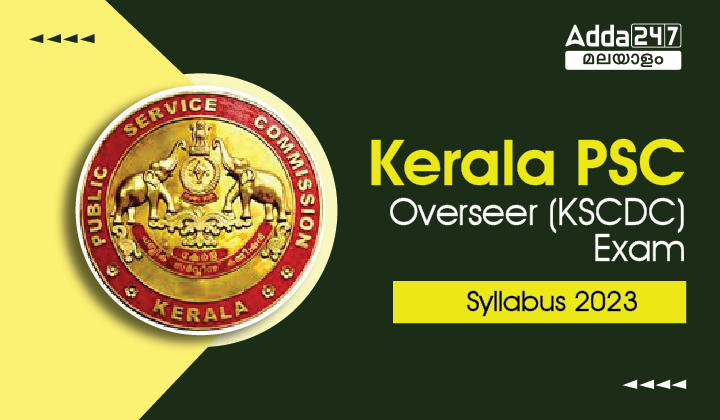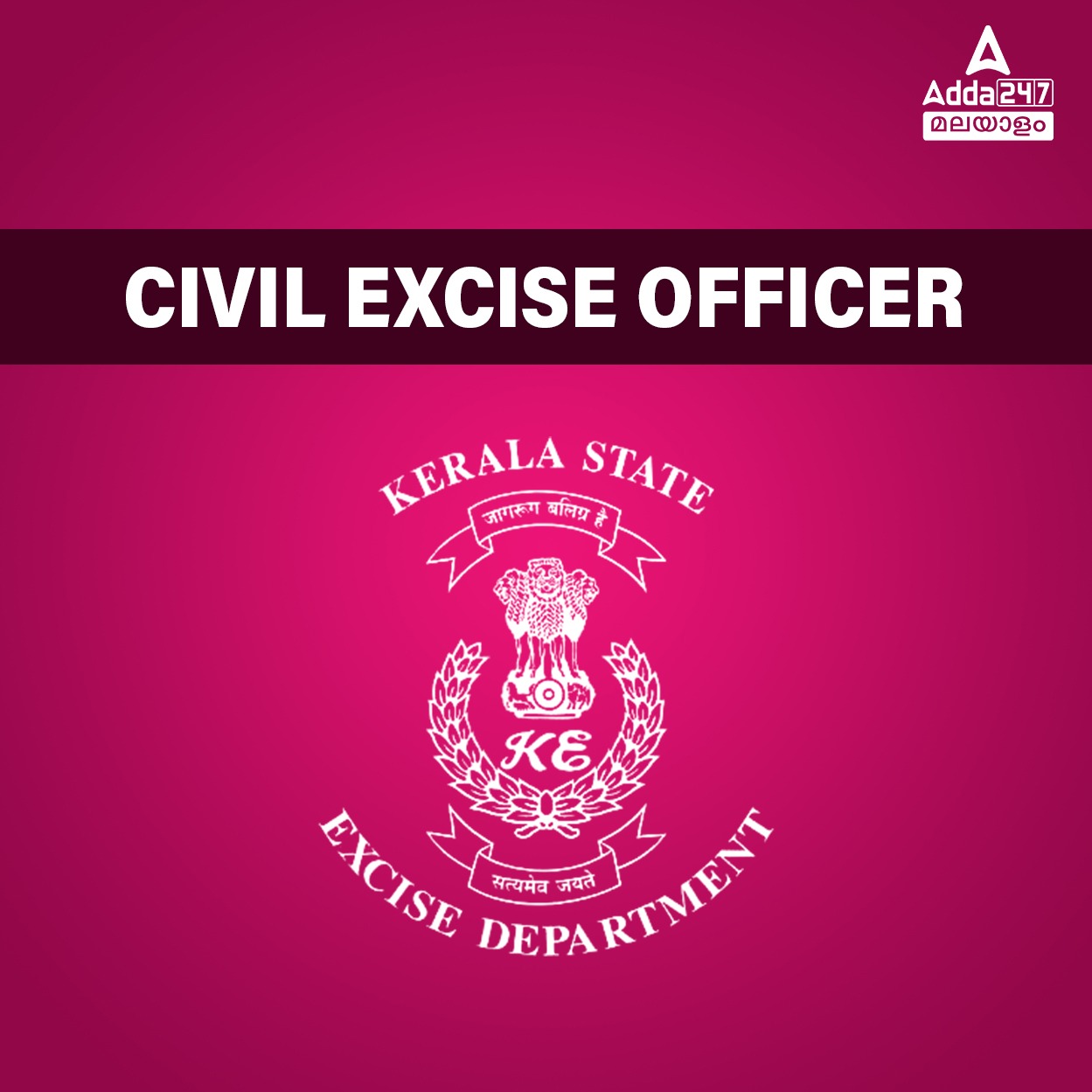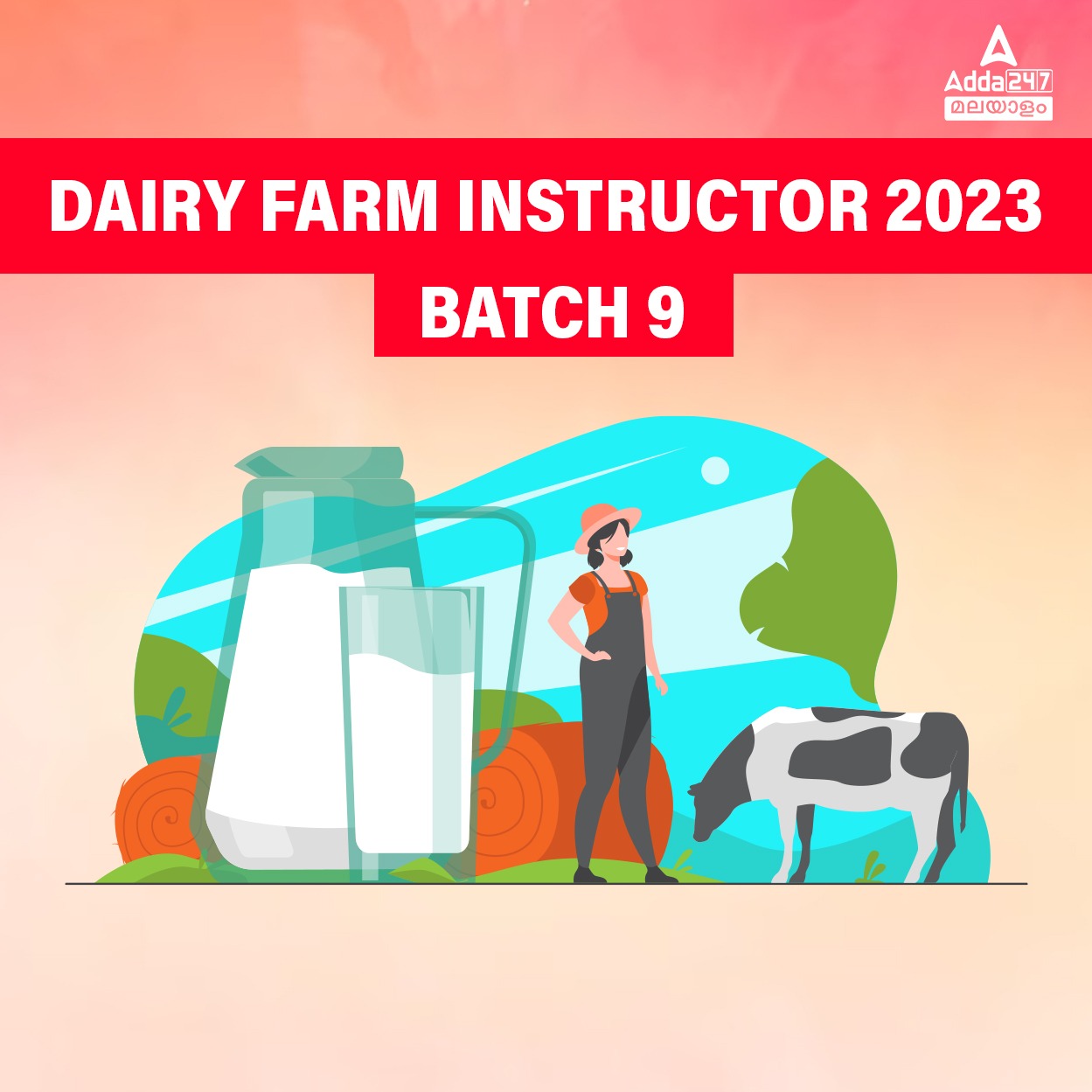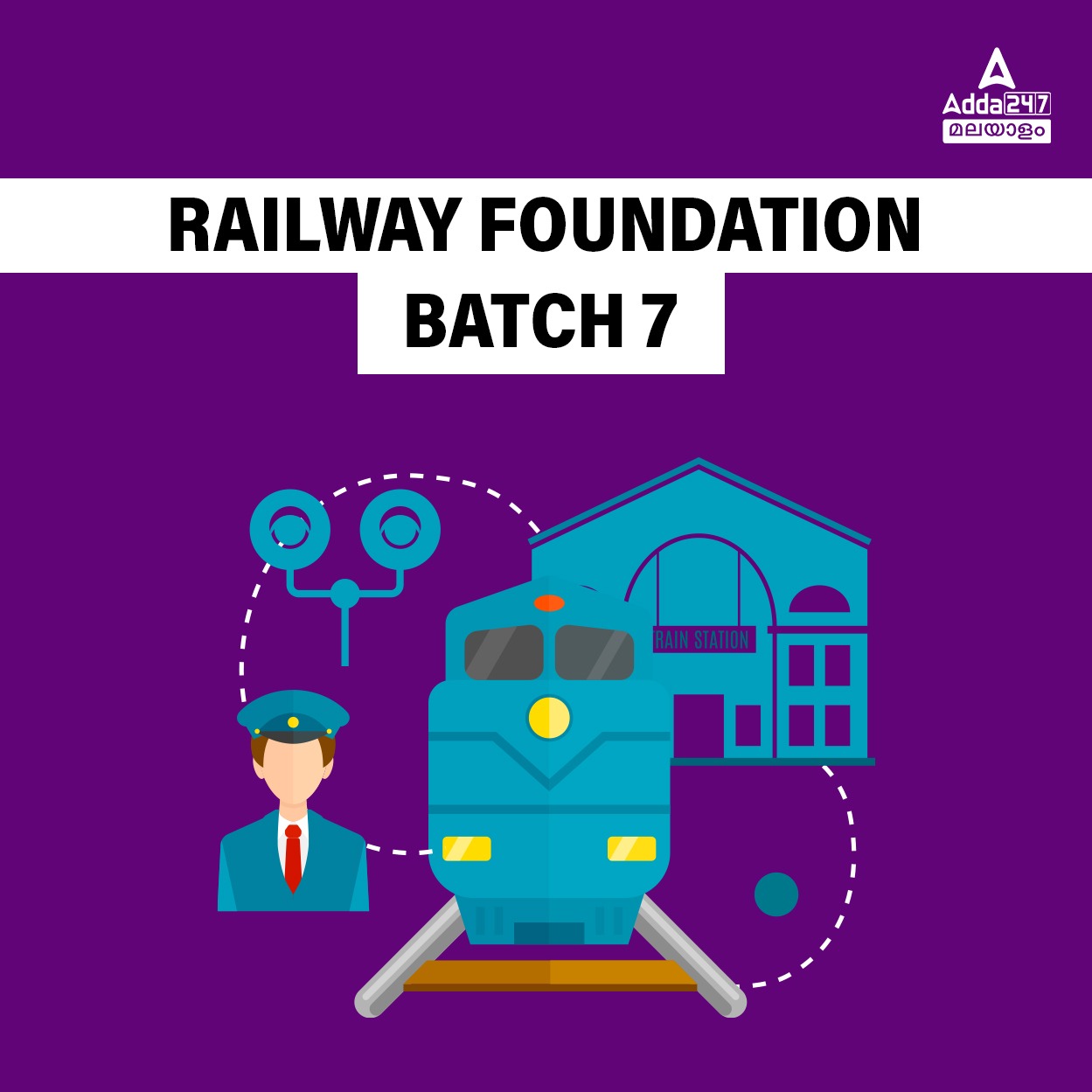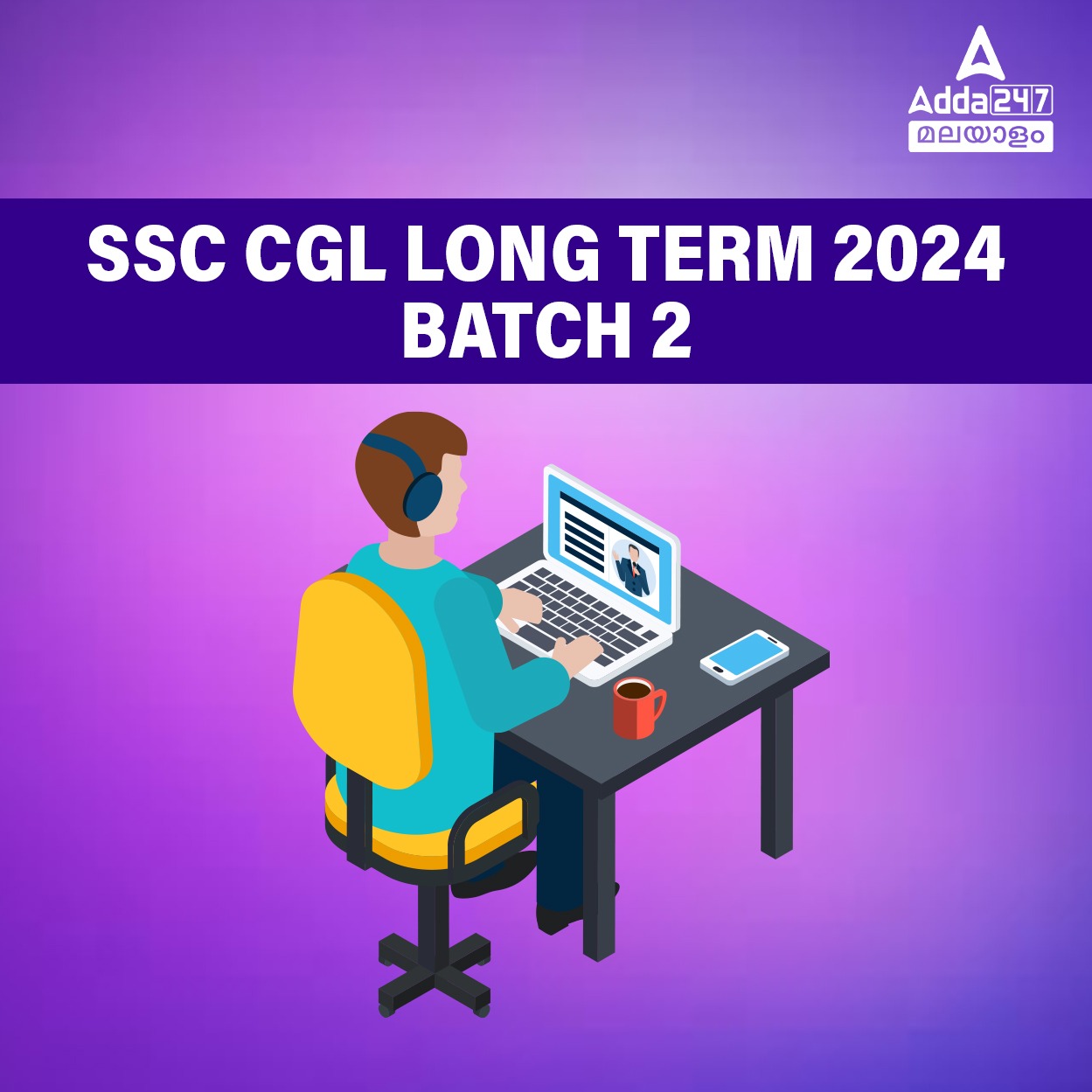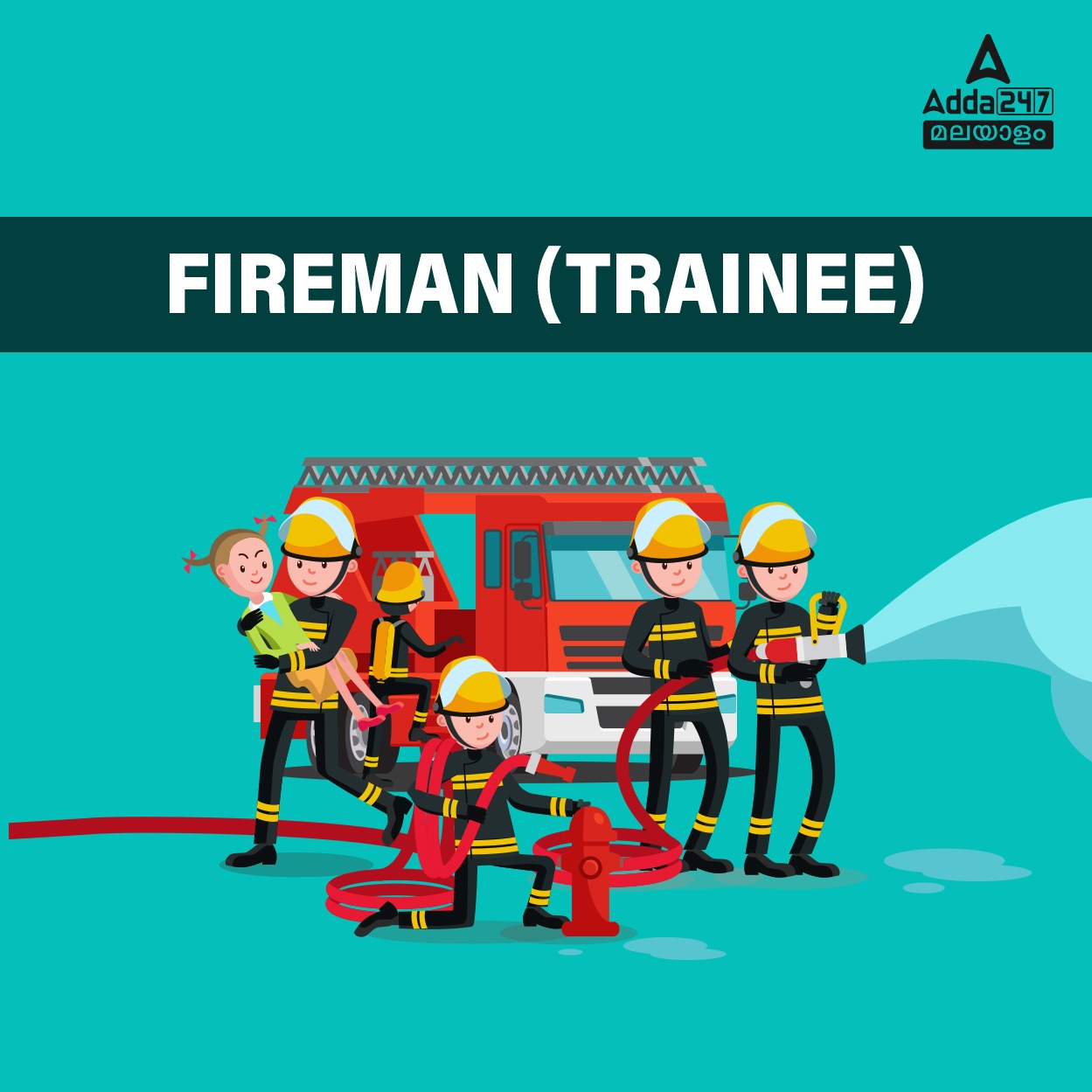Table of Contents
Kerala PSC Overseer KSCDC Syllabus: Kerala Public Service Commission has released the Kerala PSC Overseer KSCDC Syllabus on its official website. In this article, we will provide the detailed syllabus of the upcoming Overseer Exam 2023. In order to crack the exam, one needs to have a clear understanding of the syllabus, therefore read through Kerala PSC Overseer KSCDC Syllabus to broaden your perspective. You can also download Kerala PSC Overseer KSCDC Syllabus 2023 in PDF format.
Kerala PSC Overseer KSCDC Syllabus 2023
Kerala PSC Overseer KSCDC Syllabus 2023: പരീക്ഷയ്ക്കുള്ള തയ്യാറെടുപ്പുകൾ ആരംഭിക്കാൻ സമയമായി. പരീക്ഷയിൽ വിജയിക്കുന്നതിന്, സിലബസിനെക്കുറിച്ച് വ്യക്തമായ ധാരണ ഉണ്ടായിരിക്കണം, അതിനാൽ കേരള PSC ഓവർസിയർ KSCDC സിലബസ് 2023 വിശദമായി വായിച്ച് മനസിലാക്കുക. നിങ്ങൾക്ക് Kerala PSC Overseer KSCDC Syllabus 2023 PDF രൂപത്തിൽ ഡൗൺലോഡ് ചെയ്യാവുന്നതാണ്.
Kerala PSC Overseer KSCDC Syllabus: Overview
ചുവടെ നൽകിയിരിക്കുന്ന പട്ടികയിൽ Kerala PSC Overseer KSCDC Syllabus സംബന്ധമായ എല്ലാ പ്രധാനപ്പെട്ട വിവരങ്ങളും ലഭിക്കും.
| Kerala PSC Overseer KSCDC Syllabus | |
| Organization | Kerala Public Service Commission |
| Category | Exam Syllabus |
| Department | Kerala State Cashew Development Corporation |
| Post Name | Overseer |
| Category No. | 068/2021 |
| Last Date to Submit Confirmation | 9th February 2023 |
| Mode of Examination | OMR/ONLINE (Objective Multiple Choice) |
| Medium of Questions | English |
| Total Marks | 100 |
| Duration of Examination | 1 Hour 30 min |
| Official Website | www.keralapsc.gov.in |
Fill out the Form and Get all The Latest Job Alerts – Click here
Overseer KSCDC Syllabus
| Overseer KSCDC Syllabus | ||
| Parts | Main Topics | Marks |
| Part I | Civil Engineering (Diploma Level) | 40 Marks |
| Part II | Electrical Engineering (Diploma Level) | 30 Marks |
| Part III | Mechanical Engineering (Diploma Level) | 30 Marks |
Kerala PSC Overseer KSCDC Syllabus PDF Download
Kerala PSC Overseer KSCDC Syllabus PDF ചുവടെ നൽകിയിരിക്കുന്ന ലിങ്ക് വഴി ഡൗൺലോഡ് ചെയ്യാവുന്നതാണ്.
Kerala PSC Overseer KSCDC Syllabus 2023 Download pdf
Kerala PSC Overseer KSCDC Syllabus
PART I: Civil Engineering (40 Marks)
- 1) Surveying – Principle of surveying, the object of surveying, Primary division of surveying Classification of surveying, Different types of chain and tape. The factors involved in selecting stations. The different operations in chain surveying List the errors in chaining List the obstructions in chaining
- The principle of plane table surveying The functions of accessories of plane table List the operation to set up and orientation in the plane table surveying. The methods of plane table surveying
- List the type of compass. Identify the parts of the prismatic compass and their functions. Define bearing. The concept of meridian and types of the meridian, The method of booking of field notes. Calculate reduced bearing from whole circle bearings problem. Calculate the included angles from whole circle bearings.
Understand magnetic dip and declination. List the sources of errors in compass surveying. - Define leveling. Types of leveling, Different methods of leveling, Understanding the concept of level surface, datum, horizontal surface, vertical surface, and reduced level. The Benchmark and its types Understand the method of reduction of levels rise and fall method and height of Collimation method –
Classification of leveling, Contouring, Define the terms used in the theodolite survey List the uses of the theodolite. Explain the temporary adjustments of the theodolite. List the types of traverse List the different methods of traversing using a theodolite. The types of coordinates consecutive and independent coordinates calculate the independent coordinates. Gales traverse table The methods of balancing the traverse Bowditch’s rule and transit rule. The principle of trigonometric leveling The classification of tachometer Explain the principle of stadia tachometer the constants of stadia tachometry Explain
the determination of stadia constant. The principle of tangential tachometry Explains the different types of curves simple curve, compound curve, transition curve, and vertical curves Explain transition curve. The elements of a simple circular curve The data required to set out a circular curve. The different parts of
equipment like an electronic theodolite, total station, and GPS. The uses and advantages of Electronic Theodolite, Total station, and GPS Remote sensing and its application in the civil engineering field The fundamentals of GPS, receiving, observation, and the transformation of GPS results (10 Marks) - 2) Construction Materials and Engineering Stone – classification geological, Physical and chemical classification – characteristics of good building stone – varieties of stones – granite – trap basalt – sand stone – Laterite. Values of, load bearing capacity of stones. Quarrying of stones – methods – wedging and
blasting –explosives used. Dressing of stones. Clay Products: Bricks: Raw materials used – Composition of brick earth, manufacturing methods (Description only), kiln and clamp burning – IS specifications of bricks – characteristics of good brick used for building purposes. - Tiles: Type of tiles characteristics uses Floor, wall, and roofing tiles, Porcelain, vitrified, and glazed tiles.
Earthenware and stoneware pipes usesqualities - Cement: Composition, Compounds present, manufacturing methods characteristics of cement, Types of cement Properties Tests on cement Consistency test, fineness test, Sp. gravity test, Setting time test, Soundness test, and field tests, uses of cement.
- Aggregates: Sand Sources of sand River sand, Sea sand, and pit sand Limitations of mining of sand from rivers and sea shore, M sand, alternatives of sand.
- Coarse aggregates: Materials generally used, requirements of good coarse aggregates, commonly used sizes for different applications, grading of coarse and fine aggregate.
- Mortar: Preparation of lime and cement mortar Proportions of mortar for various items of work, tests on cement mortar.
- Cement Concrete: Proportioning, ingredients, PCC and RCC, Water cement ratio effects on strength and workability, characteristics of Concrete and reinforcements preparation workability Tests on Cement concrete Laboratory tests and field Tests Slump test, compaction factor test, qualities of water used for mixing. Reinforced cement concrete Qualities of materials Types of reinforcement used characteristics of reinforcing material preparation of concrete cubes and test on cubes. Chemical admixtures Plasticizers and superplasticizers, demerits of over reinforcement and under reinforcement, the importance of proper curing.
- Timber and wood products: Structural classification Softwood and hardwood, defects in timber, seasoning of timber preservation of timber wood products plywood, MDF, HDF, Veneer.
- Metals: Ferrous metals Wrought iron, Cast iron, Mild steel Special steels High carbon steel, High tensile steel, and stainless steel (Properties and uses only) Nonferrous metals: Aluminum, Copper, Lead, Zinc, and Titanium important alloys properties and uses
- Masonry: Classification of masonry walls load bearing, non load bearing, and retaining walls. Stone masonry Brick masonry Laterite masonry – composite masonry. Different types of stone masonry General principles and specifications for stone masonry as per relevant codes. Rubble masonry, Brick masonry: Different types of bonds for walls, piers, and junctions of walls for equal and unequal thickness English, Flemish (Single and Double Flemish)Specification for brick masonry as per relevant codes. Hollow block masonry: Types of hollow blocks used in construction and methods of construction Advantages and Disadvantages with reference to other types of masonry. Solid block masonry and interlocking block masonry. Partition walls Types materials requirements. Modern methods of constructions: Framed – Prefabricated Earthquake resistant.
- Damp proof courses: Definition of dampness – causes, and effects – methods of prevention –surface treatment – internal waterproofing courses. Pre-stressed concrete: Principle of pre stressing Types Internal & External and different methods pre tensioning & post-tensioning. Pre-stressed slabs and beams Formwork: Functions materials used – Requirements of good formwork – modern trends in material & technology slip forms, PVC forms. Scaffolding, Shoring, and Underpinning: Definition – purpose, and function – Requirements of materials used. Plastering and Pointing: Materials and proportion – Functions – general specifications – types
- Building Components: Different components of building from foundation to roof and their functions Foundations: Functions, Classification, Shallow Deep, Types Spread footing raft mat column footing pile foundation well foundation. Flooring: Requirements of a good floor – materials used for flooring, Floor finishes –Types Mosaic, Marble, Granite, Ceramic tiles, Vitrified tiles, Glass, Wooden, and other types of modern floor finishes. Doors and Windows: Positioning of Doors and windows with respect to lighting and ventilation. Types and Size as per relevant codes Special types of doors Flush, Revolving, and collapsible, Rolling and sliding Windows Different types Ventilator Different types Fittings for doors and windows. Lintels and sunshades: Types of lintels Wooden, Stone, brick, RCC, and RSJ lintels Sunshades Canopy and sun breakers. Arches Types, terms used. Vertical Transportation: Stairs and staircases: Location – Types – Standards for the staircase as per KBR – Tread, Rise, Going, Riser, Nosing – Width of the stair –– Head room – Flight– Landing – Handrails. Lift and escalators Component parts and requirements as per NBC, ramp, Lifts, and Escalators Planning and location – Component parts of staircase and lift – Types of the staircase. Ceiling: Materials used for Ceiling – False ceiling.
- Roof: Definition – the importance of roofing with respect to climatic conditions – classification – pitched and flat – Couple, the couple closed and collar roof. Different types of trusses for the pitched roofs – wood and steel trusses – roof covering for the pitched roofs – AC sheets, GI corrugated sheets, Aluminum sheets PVC sheets – method of arranging and fixing to the battens rafters and purlins – RCC roof – slab with beams – flat and sloped slabs –Flat slab construction weather proof course to the flat roof. Requirements of good floor finish, Selection of materials. Ceiling: Types, Requirements of the good ceiling, Selection of Materials. (10 Marks)
- 3) Quantity surveying quantity surveyor– duties of quantity surveyoressential requirements of quantity surveyor – Estimate types – detailed estimate , supplementary estimate, revised estimate, annual repair and Maintenance, approximate estimatetypes of approximate estimateproblemsUnits of measurements for different items as per standard – sundries Lump sum Lead and lift contingencies unforeseen itemswork charged establishmentEarth work computation – Trapezoidal – mid sectionmean section (trapezoidal) Prismoidal formula –computation of earth work from Longitudinal section and Cross section (no transverse slope) Capacity of reservoir from contour mapDifferent methods of taking out quantities – Center line method – long wall short wall method Compute quantities of a compound wall – steps doorswindowsventilatorcost of materials at source and at site – conveyance charges – standard data book –schedule of rates – Lump sum items –extra labour – contractor’s profit conveyance statement for different materials– schedule of rates labour and materials Analysis of ratespreparation of standard DATA of CPWD with specification as per CPWD standard Rules of measurements – rules regarding tolerance of wastage of materials general rules for taking measurements as per CPWD standardabstract of estimate preparation of abstract of estimate
- Detailed estimate preparation for building with gabled roof, and building with hipped roof. Building with a valley, two-storied building (residential and office) Abstract of estimate preparation for building with gabled roof, building with hipped roof building with a valley, two-storied building (residential and office Detailed estimate and abstract of estimate for Septic Tank and soak pit estimate
- Detailed Estimate of RCC beam, slab, and Column and preparation of bar bending schedule. Detailed Estimate of Aqueduct Detailed specifications for various items of work of Earth work excavation, Foundation concrete, Masonry work, D P C, Formwork, R C C, Plastering, Pointing, Flooring, Painting, and Polishing, I RC Specifications for WBM road. Mix seal surface works in road formation. Preparation of Plan, Estimate, and other documents for submission Definition of Valuation: Purpose Factors governing valuation Life of structure type, location Maintenance legal control. Scrap value salvage value market value book value sinking fund annuity and depreciation. Methods of valuation: Rental method direct comparison with cost Based on profit Development method of valuation depreciation method. Calculation of depreciation by different methods Land valuation – Problems (10 Marks)
- 4) Irrigation Engineering Fundamentals of Irrigation and Hydrology: Basic methods of irrigation, Nature and Scope of Irrigation Engineering: Definition of irrigation – the necessity of irrigation – advantages, and disadvantages – perennial and Inundation irrigation –flow and lift irrigation – direct and storage irrigation. Water requirement of the crop: a) Principle Crops – Kharif and Rabi Crops in India & Kerala – Dry and wet crops – Crop period b) Duty – different methods of expressing duty – base period – the relationship between duty and delta Factors affecting duty – requirements for a precise statement of duty – duty figures for principal crops– Simple problems on duty. Hydrology Run off and maximum flood discharge of a catchment: a) Rainfall – Types of rain gauges –Factors for selecting a suitable site for rain gauge station. precautions in setting and maintaining rainfall records – rainfall cycle – average annual rainfall of an area –Methods of estimating average rainfall over a catchment Thiess’s polygon method. b)Catchment basin and catchment area, Characteristics of catchment good, average, bad – free catchment, intercepted catchment – runoff – factors affecting runoff – nature of catchment, runoff coefficient – methods of estimating runoff – empirical. Formulae .c) River gauging – importance – site selection – open gauge well – measurement of velocity by surface floats, velocity rods and current meter d) Maximum flood discharge from rainfall records Ryve’s and Dicken’s formulae, H.F.L marks, Gauge reading. Diversion Head Works: a) Classification of head works – storage and diversion head work – their suitability under different conditions.– suitable site for diversion works – general layout of diversion works brief description of component parts of a weir. b) Barrage and weirs. c) Head Regulator – scouring sluice – flood banks and other protective works (only description).d) Percolation – percolation gradient – up lift pressure, the effect of percolation on irrigation works, uplift pressure and exit velocity – scour – protective works – solid and loose aprons Storage head works: a. Dams – types – selection of site types of survey for site selection – Factors influencing in site selection site investigations – Describe the terms – full reservoir level, maximum water level, top bund level, dead storage, live storage, freeboard. b. Evaporation – Evaporation losses in reservoirs (only brief description) c. Dams – rigid and nonrigid dams – main types – gravity dams forces acting on a gravity dam – failure of gravity dams and remedial measures – elementary profile – limiting the height of dam – low dam and high dam – free board and top width – sketch practical profiles of low dam –– drainage gallery – construction joints and their functions spillways (only brief description). d). Earth dams – situations suitable for earth dams – types of earth dams – causes of failure of earth dams and precautions saturation gradient and (phreatic) line– drainage arrangements of an earth dam. e). Tank sluices – head wall, tower head type – regulating arrangements. (Brief explanation and diagram only. Tank surplus works – necessity – suitable site – flush escapes – surplus weirs. Irrigation canals and soil erosion: Distribution works. a) Canals – classification – a typical cross-section of the canal in cutting, embankment, partial cutting, and embankment – berms – standard dimensions – balancing depth of cutting region channel, necessity and types of canal lining – maintenance of canals. (Only in brief). b) Canal regulation – sluice – drops – escapes and their functions, c) Cross drainage works – necessity – general description of aqueducts – super passage, under tunnel – siphon – level crossing – inlet and outlet. (Brief explanation and diagram only) d) Soil erosion – causes and effects of soil erosion, methods of prevention of soil erosion (10 Marks)
PART II: Mechanical Engineering (30 Marks)
Module 1: Fluid Mechanics (5 Marks)
Definition of fluid, properties of Fluid, Pascal’s Law, Hydrostatic law, Measurement of pressure, Total pressure, the center of pressure, Buoyancy, Meta center, Metacentric height, types of fluid flow, discharge, continuity equation, Euler’s equation, Bernoulli’s equation, Venturi meter, orifice meter, pitot tube, flow through Orifices, notches and weirs, Reynolds experiments, major and minor losses, Darcy Weisbach equation, Chezy’s formula, water hammer, vapor pressure
Module 2: Hydraulic machines: (5 Marks)
Impact of jet, jet Propulsion, Hydraulic turbines such as Pelton turbine, Francis and Kaplan turbines and their various efficiencies, draft tube, uses, different types, Specific speed, unit quantities, Governing of turbines, Centrifugal pumps and Reciprocating pumps, cavitation, the effect of cavitation, Slip, positive and negative slips, the reason for slip, Indicator diagram
Module 3: Thermodynamics (4 Marks)
Thermodynamic systems, thermodynamic properties, Intensive and extensive properties, path, processes like reversible, Cyclic, quasi-static, Zeroth law of thermodynamics, Enthalpy, entropy, specific heats, First law, second law, gas laws such as Boyle’s law, Charles’ law, Avogadro’s law, Joule’s law, Carnot cycle, Air
standard efficiency, Mechanical efficiency, overall efficiency, Otto cycle, and Diesel cycle.
Module 4; Thermal Engineering & Power Plant Engineering (4 Marks)
Fuels, combustion of fuels, Calorific values, lower calorific values, Upper calorific values, Bomb calorimeter, gas calorimeter, minimum air, and excess air required for combustion of fuels, stem, wet, dry and superheated steam, Rankine cycle, Brayton cycle, steam turbines, Gas turbines, steam nozzles, compounding, velocity, pressure, and velocitypressure compounding. Impulse and Reaction turbines, advantages and disadvantages of both
Module 5: Mechanics and Strength of Materials (5 Marks)
Centre of gravity, centroid, Moment of inertia, parallel axis theorem, Perpendicular axis theorem, beams, types of beams and different types of loads acting on the beams Simple stresses and strains, Hook’s law, elastic constants, Factor of safety, linear stress and strain, lateral stress and strain, Poisson’s ratio, Thermal stress and strains, composite bar, Mohr’s circle, Shear force and bending moments, torsion of shafts, thin and thick cylinders, Columns and struts.
Module 6: Manufacturing Process and Production Engineering (2 Marks)
Elementary ideas about various basic workshop practices of Carpentry, foundry, sheet metal, welding, smithy, and Fitting and various tools used in each sections Machine tools like lathe, shaper, plainer, milling, drilling, and slotting machines
Module 7: Engineering Drawing and Machine Design (3 Marks)
First angle projection method and its symbol, projection of points and lines in four quadrants, construction of various conic sections like ellipse, parabola, and hyperbola, Development of surfaces, a section of solids, and Isometric and oblique projections. Design of joints, threaded fasteners, keys, cotters, couplings, transmission system, belt, rope, gear, chain drives, and Open belt and cross belt, length of the belts. Welded joints and Riveted joints and their strength and various efficiencies
Module 8: I.C Engines and Steam boilers (2 Marks)
Engines, Heat engines, S.I & C.I engines, detonation and knocking, Fuel injection, Air fuel ratio, compression ratio, Octane number, Cetane number, steam boilers, water tube and fire tube boilers like Cochran and Babcock and Wilcox boilers, modern high-pressure boilers like La Mont boiler, Benson boiler Boiler accessories, and mountings
PART III: Electrical Engineering (30 Marks)
Module 1: Basic Electrical Engineering (5marks)
Define voltage, current, resistance – Concept of DC circuitOhm`s law Kirchhoff’s laws. Series, parallel, and combination connections of resisters. Define electric power and energy. Resistance, Inductance, and Capacitance. Faraday`s laws of electromagnetic induction. RLC series circuit
Module 2: Electrical measuring instruments (4 marks)
Indicating Instruments Working principle of permanent magnet moving coil, dynamometer type, Rectifier type, and moving iron type instruments. Extension of range of DC voltmeter and ammeter. Measurement of Power and Energy. Insulation Megger earth tester
Module 3: Basic Electronics (4 marks)
Semi conductor physicsPN junction Diode – Zener diode Transistors, Amplifiers Principle of amplification, Oscillators
Module 4: Fundamentals of ac systems (4 marks)
Single turn generator voltage equation– instantaneous value, peak value, r.m.s, average, form factor, peak factor, waveform – cycle Time period – frequency A.C through pure R, L, C active, Reactive and Apparent power, Power factor, Resonance in RLC series
Module 5: DC machines (5 marks)
D C generator Working principle constructional details – Classification EMF equation –. DC motor – working principle–different types of starters. Applications of DC motors.
Module 6: AC machines (4 marks)
Transformer –operation construction of single phase transformer. Emf equation. Transformation ratio. Applications Three phase induction motor construction – the principle of operation. Applications of motors.
Module 7: Digital electronics and microprocessors (4 marks)
Digital fundamentals – Binary number system decimal number system Binary to decimal conversions and vice versa. Logic gates Introduction number systems one’s and two’s complement. Universal gates Arithmetic operations by digital circuits Fundamentals of Microprocessor Introduction to Microprocessors – Features of 8085 microprocessor.

